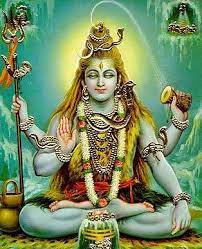
Nataraja: The Divine Art of Shiva and Its Representation of Cosmic Harmony
In the heart of Hindu mythology, the image of Lord Shiva as Nataraja, the Cosmic Dancer, stands as a mesmerizing embodiment of divine artistry and profound symbolism. This iconic representation captures the essence of creation, preservation, and destruction in a single dance, illustrating the harmonious interplay of cosmic forces. In this blog, we delve into the captivating symbolism of Nataraja and how it reflects the concept of cosmic harmony within the universe.
The Dance of Creation and Destruction

The Nataraja sculpture depicts Lord Shiva dancing within a circle of flames, symbolizing the eternal cycle of creation, preservation, and destruction. His dance represents the rhythmic flow of cosmic energies that sustain the universe's existence. With one foot raised, Shiva's dance signifies the release of the universe from its cosmic egg, while his other foot firmly rests on the dwarf demon Apasmara, symbolizing the suppression of ignorance and illusion.
The Hand Gestures: Mudras of Meaning

Nataraja's various hand gestures (mudras) hold significant meanings. His right hand is held in the "abhaya mudra," signifying fearlessness and protection, while his left hand points towards his raised foot, directing devotees' attention to the path of liberation. His upper hands hold the drum (representing creation) and a flame (representing destruction), symbolizing the cosmic dance's dual nature. These mudras showcase the balance between opposites and the interdependence of cosmic forces.
The Circle of Fire: Cycles of Time

The ring of fire encircling Nataraja is a representation of time and cycles. Just as a dance has its own rhythm, the universe operates in cycles, transitioning from birth to growth, decay, and rebirth. The flames remind us of the inevitable change that occurs within these cycles. This symbolism invites us to embrace change as an inherent part of existence and to find harmony within the transitions of life.
Ardhanarishvara: The Union of Masculine and Feminine

Nataraja's form often merges the male and female aspects in the Ardhanarishvara aspect, with the right half representing Shiva and the left half symbolizing Parvati. This union of opposites highlights the concept of balance and unity. It signifies that creation can only happen when the masculine and feminine energies are in perfect harmony, highlighting the interconnectedness of all existence.
Cosmic Harmony: Finding Order in Chaos

The Nataraja sculpture embodies the idea that within the seeming chaos of the universe, there exists a profound cosmic harmony. The dance's rhythm brings order to disorder, and its movements align with the universal laws that govern existence. This symbolism encourages us to perceive the underlying order amidst life's challenges and disruptions, ultimately reminding us that there is purpose even in apparent chaos.
Conclusion
Nataraja, the Cosmic Dancer, encapsulates the cosmic harmony that governs the universe's very fabric. Through the symbolism of dance, gestures, and visual elements, this divine representation teaches us about the cyclical nature of existence, the interplay of opposites, and the balance between creation and destruction. As we gaze upon the Nataraja sculpture, we are invited to reflect on the dance of life itself – a dance that resonates with the rhythm of the cosmos and inspires us to find our own place within the symphony of existence.
Author Nishita Khanna

